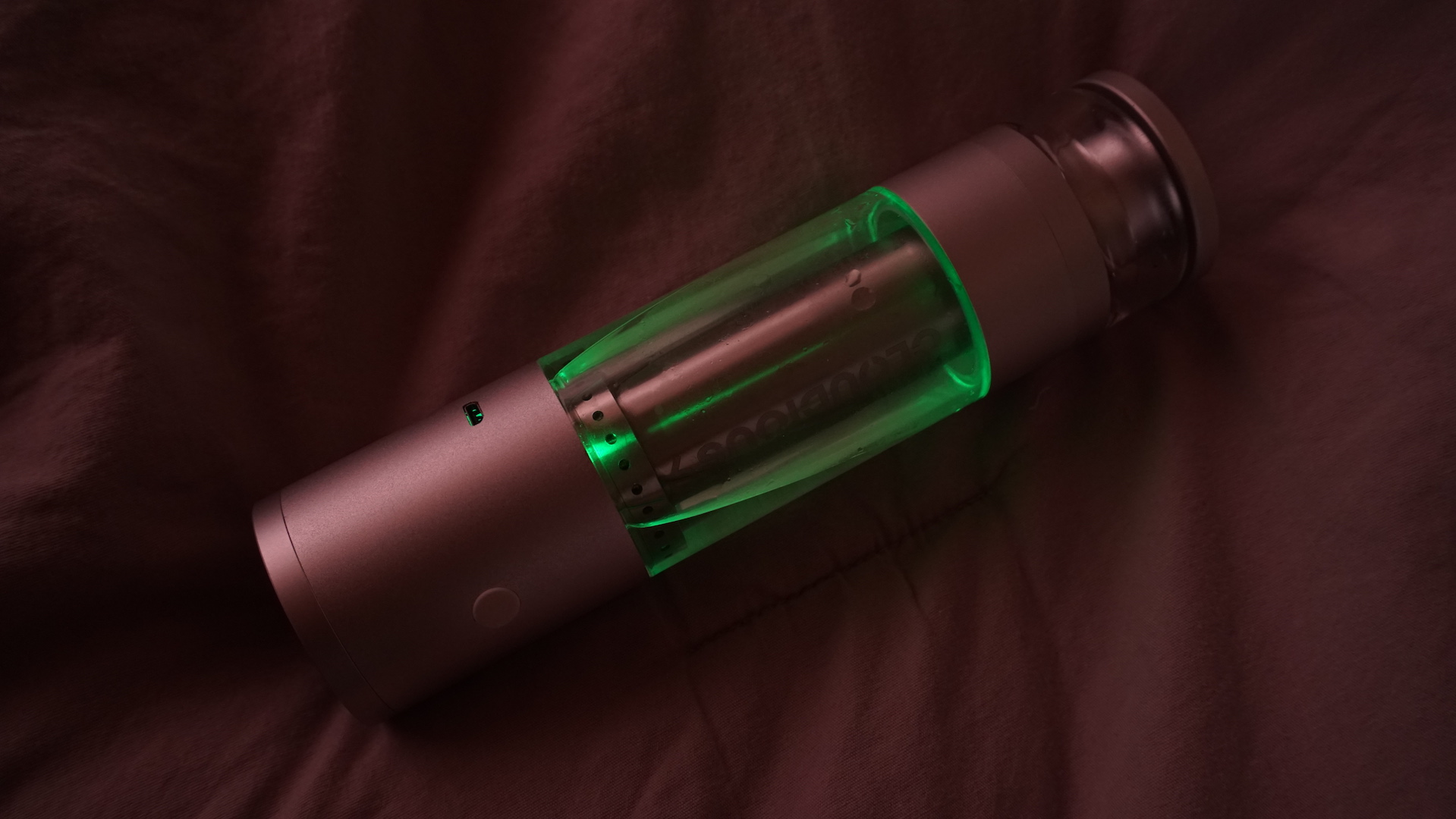Vaporizers have changed the way we talk about, and smoke, cannabis.
Chris Folkerts remembers the first time he hit a weed vape. It didn’t get him high, but he still considers the incident “probably the most powerful moment” of his life.
“Holy shit,” Folkerts recalled thinking to himself. “This just fucking digitized weed.”
That was seven years ago. At the time, Folkerts was working at a heavy metal record label in Los Angeles. But soon after his first toke of a pre-filled THC-infused vapor cartridge, he started to develop what would become the G Pen, and began hustling the devices from the trunk of his car. Today, Grenco Science, which Folkerts founded in 2012*, has become ubiquitous in hip hop culture. Everyone from Wiz Khalifa to Open Mike Eagle has rapped about the G Pen. Snoop Dogg had his own branded line.
The vaporizer market—estimated to now be worth billions, although exact numbers are hard to come by—barely existed a decade ago. Yet, it’s completely changed how thousands of people get high or administer medicine. How did it get this way? And where is the market headed?
Vaporizers, or vapes, have been around for a while, only now they can now pair with your smartphone, have no trouble vaporizing both cannabis concentrates and dry flower, and offer customized heating profiles. Some offer built-in water-filtration, while others look like fountain pens. The bulky Storz & Bickel’s classic Volcano is now eclipsed by pocket portability and long battery-life. Trendy modern vapes now more closely resemble a flash drive than whatever wooden New Age gem box the Magic Flight is supposed to be.
This isn’t a coincidence. The modern marijuana vape market is deeply rooted in Silicon Valley. Mark Williams, a co-founder of Firefly, a leading brand of cannabis vaporizers, started as a product developer at Apple. PAX Labs, which makes the PAX 3 weed vape and the Juul nicotine vape, began as a San Francisco startup. Just two years ago, the so-called “iPhone of vaporizers” had a $46.7 million Series C funding round to expand overseas. Even dispensaries strive to resemble Apple stores—part of an “upscale revolution in cannabis retailing.”
“When this started, vapor tanks and concentrates accounted for less than five percent of sales across all dispensaries,” Folkerts told me on a phone call. “Seven years later, they account for more than 50 percent in a lot of places.”
Some vapor tech companies, such as KandyPens and Dr. Dabber, are claiming between 350 and 500 percent growth in the past two or three years alone.
“Ten years ago, the idea of vaping anything as opposed to smoking it was a bit of a novel idea, but now it’s pretty standard practice,” said Sasha Kadey, CMO of Greenlane, which owns VapeWorld, the largest vaporizer distributor in the United States.
Folkerts believes vapes are responsible for removing the stigma around medical marijuana, which in turn has led to more states adopting pro-cannabis legislation. Some states, such as Pennsylvania and Florida, only allow vaping medical cannabis. In Folkerts’ opinion, there’s no way to class-up ripping a bong, but even people who don’t smoke appear generally accepting of vapes.

“Even a nice pipe or a chillum, if you go in the corner and light a lighter, it could be crack, right?” Folkerts said. “But it could be crack in a G Pen, and people would think it fucking looks smooth and sweet. It’s like totally crooked. [Vaporizing] changed people’s perception of the consumption aspect in a lot of ways.”
The ubiquity of vapes also means things are getting more competitive. Where once a handful of companies dominated the market, now there are dozens, and their product lines are getting more complex and creative: LED displays, Bluetooth app synchronization, lithium-ion batteries. But above all, companies are aiming to be seen as professional and healthy.
According to Kadey and others I talked to, the marijuana vaporizer market is trending toward closed-system models—that is, disposable pre-filled cartridges of liquid cannabis extract, rather than open-system models, in which the user manually fills the cartridge. Pre-dosed, self-contained systems are seen as more medicinal by some, and make weed entry-level for even grandma. The Atlantic recently wrote about HMBLDT, a low-THC vape pen company. Grenco Science is developing its own disposable, pre-filled pen cartridges, called Gio, which will be released late July.
The growth of the cannabis-centered vaporizer industry shows no signs of stopping, especially as more states come on board with medical and recreational weed. One thing seems certain: The future of getting high is digital.


Frank the Tank
I remember vaporizing weed with a mason jar and a hot plate back in 1994